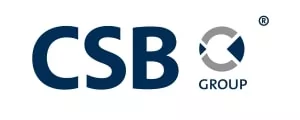- within Media, Telecoms, IT, Entertainment, Real Estate and Construction and Immigration topic(s)
On 14th June 2022, the European Banking Authority (“EBA”) released and published its guidelines on policies and procedures in relation to compliance management and the role and responsibilities of the anti-money laundering and counter-terrorist financing (“AML/CFT”) compliance officer under Article 8 and Chapter VI of Directive (EU) 2015/849 (“Guidelines”). These Guidelines were issued following the successful public consultation on the Draft guidelines on policies and procedures in relation to compliance management and the role and responsibilities of the AML/CFT compliance officer under Article 8 and Chapter VI of Directive (EU) 2015/849 which was duly launched on 2nd August of last year. The deadline for competent authorities to report whether they comply with the guidelines will be six months after the publication of the translations. The Guidelines will apply from 1 December 2022.
Notably, the EBA has a legal duty to prevent the use of the European Union's financial system for money laundering and funding of terrorism purposes, and a mandate to lead, monitor and coordinate the European Union financial sector's fight against money laundering and funding of terrorism. Through these Guidelines, the EBA aims to achieve a common understanding, by competent authorities and credit or financial institutions, of the role and responsibilities of the AML/CFT compliance officer; and the management body with regard to AML/CFT or the senior manager where no management body exists.
The EBA, through the issuance of these Guidelines, has indeed created a common understanding, which shall be applied consistently and enforced as necessary, by competent authorities and credit or financial institutions, of credit or financial institutions' AML/CFT governance arrangements. This common understanding is of vital importance in order to strengthen and consolidate the European Union's defences against AML/CFT, and the EBA has thus issued a six-month deadline following the publication of the necessary translations of the Guidelines for all competent authorities to report whether they comply with the guidelines, meaning that the Guidelines shall be applicable from 1st December 2022.
In accordance with the above, the recently published Guidelines have been promulgated with the main task of setting out provisions on the following:
- The role and responsibilities of the management body in the AML/CFT framework and of the senior manager responsible for AML/CFT: Guideline 4.1 specifies the duties and tasks of the management body in the AML/CFT framework.
- The role and responsibilities of the AML/CFT compliance officer: Guideline 4.2 specifies the need to appoint an AML/CFT compliance officer at a level which entails the powers to propose, on his/her own initiative, all necessary or appropriate measures to ensure the compliance and effectiveness of the internal AML/CFT measures to the management body in its supervisory and management function. Guideline 4.2 also specifies the suitability requirements for the role of AML/CFT compliance officer as well as explaining the roles and responsibilities of the person employed in this role.
- The organisation of the AML/CFT compliance function at group level: Guideline 4.3 sets out specific roles and responsibilities and clarifies the reporting lines in respect of the role of the AML/CFT compliance officer function at a group level, in order to ensure that shortcomings in the AML/CFT framework affecting the entire group or a large part of the group are addressed effectively.
It is of vital importance to note that the provisions set out in the Guidelines should be applied in a manner that is effective and proportionate to the credit or financial institution's type, size and internal organisation, the nature, scope and complexity of its activities, and the money laundering and funding of terrorism risks to which the credit or financial institution is exposed.
Following the publication of the Guidelines, the Guidelines have been translated into the official EU languages and published on the EBA website. The deadline for competent authorities to report whether they comply with the guidelines will be six months after such publication of the translations. This ultimately means that the guidelines will apply from 1st December 2022.
The content of this article is intended to provide a general guide to the subject matter. Specialist advice should be sought about your specific circumstances.


